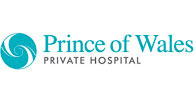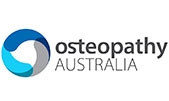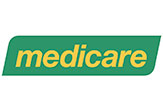
Laser Treatments
WHRIA offers two new types of laser treatments:
1. The MonaLisa Touch (CO2) Laser for vulvo-vaginal problems related to menopause (vulvo-vaginal atrophy).
2. Fotona Erbium Laser for non-surgical treatment of minor urinary leakage and mild vaginal prolapse.
Please note these laser treatments are not standard treatments and do not have a Medicare or private health insurance rebate.
Lasers are relatively new treatment options for these gynaecological conditions. There is an increasing body of evidence (research) demonstrating that lasers are a safe and effective treatment and improve symptoms of menopause related vulvo-vaginal atrophy problems, mild urine leakage and mild vaginal prolapse. Most of the data to date is based on small studies which suggest improvement with these problems. However, we are awaiting outcomes from more rigorous studies regarding short- and long-term effectiveness. There are no reported serious adverse effects, but the long-term risks of the laser treatment are unknown.
If you are interested in laser treatment please make an appointment to discuss the risks and benefits with one of our gynaecologists.
To enquire if laser treatment is suitable for you
Click HereMonaLisa Touch Laser For Vaginal Thinning & Localised Vulval Pain
The MonaLisa Touch Laser is a fractional CO2 laser that stimulates tissue regeneration.
What causes vaginal thinning?
Vaginal thinning is caused by an under-supply of oestrogen and results in reduced hydration and thickness of the protective mucosa (vaginal skin). This leads to a loss of natural lubrication and changes in the natural pH balance of the area. Vaginal thinning is a normal ageing process after menopause.
Symptoms may also occur in younger women, and can be associated with eating disorders, low body weight, post-cancer treatment, early menopause or high level athletic training, but can occur whenever there is a lack of oestrogen in the vulvo-vaginal tissues.
What are the symptoms of vaginal thinning?
- Vaginal itching and burning
- Vaginal tearing
- Dryness and loss of lubrication
- Incontinence and urinary urgency
- Prolapse and laxity
- Vaginal and vulval pain
- Painful sexual intercourse
- Recurrent urinary tract infections
Symptoms can worsen in up to 50% of women after menopause. Some women may also be taking medication for other health conditions, which cause more severe vaginal atrophy symptoms. Vaginal symptoms can have a negative effect on your general well-being, body image and self-esteem, your quality of life, and in many cases place stress on intimate relationships.
How does the MonaLisa Touch laser work?
For many years fractional CO2 laser treatment has been effective in other areas of medicine like dermatology.
The laser works by heating the vaginal tissues. This triggers tissue regeneration, helping to produce new collagen and elastic fibre production and regenerating blood flow in the area. The tissue responds by becoming more resilient and better hydrated.
The tissue can be regenerated and restored to a pre-menopausal state. View the simulated video here.
What other treatments are available for vaginal atrophy?
The standard treatment for vaginal atrophy requires an ongoing application of vaginal moisturisers or oestrogen creams/pessaries directly into the vagina. These localised treatment options are cheaper than laser. Both of these treatments can be used in conjunction with the laser treatment. Some women, such as women with breast cancer, may not be able to use these hormone products. Other women may be uncomfortable with the use of hormone therapy or find the creams and pessaries irritating or inconvenient.
How many treatments will I need?
The average treatment regime consists of 3-4 treatments, performed monthly, over a period of three – four months. As time passes, top up treatments may be useful at approximately 6-12 monthly intervals.
Fotona Erbium Laser Treatments for Mild Prolapse and Incontinence
Women with mild bladder leakage or mild prolapse symptoms may consider this type of laser to improve symptoms. The laser is not curative but aims to reduce discomfort from symptoms. Research to date suggests that there is improvement of symptoms after laser treatment but we are still awaiting outcomes from larger, rigorous studies on short and long term effectiveness and safety.
Alternatives to laser treatment for these conditions may include topical vaginal oestrogen, pelvic floor physiotherapy, a vaginal pessary or surgery. Some of these treatments may be used in conjunction with the laser.
The average treatment regime consists of 3-4 treatments, performed 6 weekly, over a period of 4-6 months. As time passes, top up treatments may be useful at approximately 6-12 monthly intervals. This laser also works by heating the tissues to stimulate a regenerative effect.
It is important to note that any treatment modality has varying degrees of success. Effectiveness of the laser treatments cannot be guaranteed, as response to treatment can vary between patients. Your suitability for treatment should be discussed with your doctor.
To enquire if laser treatment is suitable for you
Click HereHow can I make an appointment?
Call WHRIA on 1300 722 206 and ask to see one of our gynaecologists for laser suitability please book with Dr Lauren Kite, Dr Karen Chan, Dr Yasmin Tan or Prof Thierry Vancaillie. You will need a valid referral to be eligible for any applicable Medicare rebates for your consultation.
Simulated laser video

Helpful resources
If you’d like more information about our laser services you can download these health information fact sheets and more from our Health Information section of this website.
- Painful sex
- PCOS
- Vulvodynia
- Menopause after breast cancer
- Incontinence
- Managing hot flushes
- Prolapse
- Pelvic floor care
- Vulvo-vaginal care
- Erbium Laser for vaginal relaxation
If you have a specific enquiry about laser treatments
Click Here







